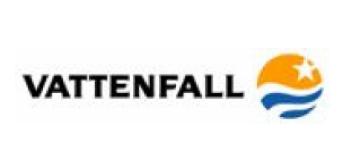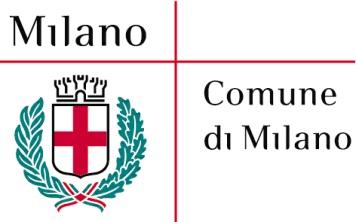Global District Energy Climate Awards 2011
District energy systems from all over the world applied for the 2011 award. The award aims at recognizing the achievements of cities and communities across the globe that demonstrates local district energy leadership in providing clean, sustainable energy solutions.
Applications were received form over 30 cities/systems. Below you find summaries of the applications and a link to a PDF copy of each.
PDF version of the table below: PDF
|
|
||
“Modernization of an existing scheme” awardIn this category, the award of excellence went to:(exaequo) |
||
|
|
||
| Sweden, Enkoping |
Enkopings VarmeverkIn the early 1970s the town of Enkoping in Sweden constructed a district heating system. The local government operated oil boilers to satisfy the heat demands. However, concerns regarding energy security surfaced when the local Swedish military regiment approached the local government about imported fossil fuels and the need for domestic energy supplies. Bioenergy was suggested as presenting opportunities for development. |
 |
| Sweden, Gothenburg |
An economically viable District Heating SystemBy the end of the 1970s, Gothenburg system had grown to encompass eight large ‘district heating islands’ in Gothenburg. All power and heating plants were fed by oil-fired hot water stations. |
  |
| Denmark, Nyborg |
Effective co-operation for Heat SupplyThe town of Nyborg is a middlesized Danish provincial town located at the island of ‘Fuen’, with a population of approximately 17,000. |
 |
| Finland, Helsinki |
Rapid Utilisation of district HeatEnergy-efficient district heat was selected as the heating solution for the capital city as early as the late 1940’s, when a far-reaching decision on producing electricity and heat from the same fuel (CHP) and district heating was made in Helsinki. |
 |
| France, Grenoble |
Impressive Progression of RenewablesThe Grenoble urban area boasts a modern heating network, a local facility at the service of a sustainable energy policy, managed by the CCIAG. This urban heating network has progressed in 50 years from 0% to 54% of renewable or recovery energy (R&REn), while at the same time multiplying the heat distributed to its customers by 30. The recent conversion work to wood energy carried out on a boiler designed to burn coal from the |
 |
| France, Val Maubue |
Use of District Heating leads to significantly reduced heating bills for subscribersThe Val Maubue heating network supplies 4,756 equivalent housing units in the municipalities of Lognes and Torcy in the Paris region. |
 |
| Germany, Wurzburg |
The importance of a municipal energy solutionWuerzburg as a German Franconian city with more than 130,000 inhabitants and a University with more than 30,000 students has always emphasized the importance of a municipal energy solution. |
 |
| Italy, Ferrara |
Geothermal energy source powers the Urban heating systemFollowing the energy crisis of the 70’s, the Municipality of Ferrara started up the ‘Geothermal Project’, in order to develop the geothermal resource as a primary source for an urban heating system and reduce the environmental impact created by the traditional energy sources (coke, oil and methane gas). |
 |
| Lithuania, Akmene region |
Modernisation of a systemThe district heating system with its constituent components that was leased in 2000 by Akmene’s energija for modernisation and optimisation, counted from 30 to 40 years of operation and demonstrated extremely poor operation results such as the inefficiency of energy generation and huge technical losses in the system. The variety of fuel used, such as environmental polluting coal and crude oil were still used and did not correspond to the modern perception of efficient and sustainable energy production. |
 |
| Lithuania, Palanga |
District Heating Systems that meet environmental requirementsThrough this project, Litesko seeked to be socially responsible, and minimize the urban heat polluting the surrounding environment. The main reason to install some flue gas cleaning equipment was that the pollutions of the solid particles from wood chips boiler depended on quality of fuel, and varied from 400 to |
 |
| The Netherlands, Purmerend |
Purmerend’s economically viable District Heating GridIn 2007 the new company Stadsverwarming Purmerend B.V. took over the responsibilities of the district heating grid from the municipality in Purmerend, the Netherlands. |
 |
| Poland, Poznan |
Poznan’s positive influence on the air supplyThe city of Pozna and its residents access to an energy-efficient co-generational source of heat and hot water supply, having an additional positive influence on air quality in the city. The district heating system in Pozna has over 360,000 end users of heat, residents, public institutions, commerce, and |
 |
| Poland, Tarnowskie Gory |
Modernisation of an existing system proves beneficialThe district heating network has existed since 1976 as a part of Fabryka Zmechanizowanych Obudw Acianowych FAZOS plant in Tarnowskie Gory. Since 1997, it has been a municipal company, |
 |
| Romania, Ploesti |
Romania’s most efficient SystemThe District Heating in Ploiesti is a municipal scheme which provides hot water and heating for 57 900 individual apartments (150 000 inhabitants), 71 public institutions and 753 private companies. Although the system was created approximately 40 years ago, it is the most efficient among similar systems in Romania, and it is recognized as such by local and central authorities and by the private sector of the economy. Main results were obtained through these measures:
|
   |
| Sweden, Falun |
Absorption cooling machinery reduces the use of electricityVastermalmsverket is a combined heat and power generation plant, which makes it unique due to simultaneous production of heat and electricity. By investing in an absorption cooling machine the |
  |
| Sweden, Helsingborg |
For the City of Helsingborg the main idea has been to create a sustainable energy system where household heating is using available excess heat in the city so as to reduce the use of primary energy. This strategy has been successful and today 78% of all residents are part of the district heating system. In the mean time, CO2 emissions have decreased. It was stated in the mid-nineties that a major change was necessary and a new programme was implemented, so far this has resulted in:
|
  |
| Sweden, Boras |
The modernization of an existing scheme by using renewablesBoras would like to become a fossil fuel free city, in which it aim to convert the cities’ fossil energy sources to renewable sources in both the heating and transport sectors and to generate electricity sufficient to meet the cities’ needs from renewables. The city has elaborated a special recycling model which uses communal resources such as waste and transforms it into various benefits such as district heating, district cooling, biogas and electricity.
|
 |
| United States, Cambridge (MA) |
Veolia exports ‘Green’energy across the Charles RiverIn 2005, Veolia Energy North America acquired a dying small-community district energy network in Cambridge, MA, which served world-class biotechnology leaders near the campus of the Massachusetts Institute of Technology (M.I.T.). The system is powered by the Kendall Station combined heat and power (CHP) plant owned by GenOn Energy, Inc. |
 |
| United States, Seattle |
Cities’ biomass project now reduces emissions by around 45,000 tonnes annuallyIn 2010, Seattle Steam began producing its steam using a biomass boiler that burns clean urban waste wood from local sources. The company will now be able to reduce CO2 emissions by about 45,000 tonnes annually. The biomass project is just the beginning of Seattle Steam’s environmental initiatives. |
 |
|
|
||
“Expansion of an existing scheme” awardIn this category, the award of excellence went to: |
||
|
|
||
| Spain, Barcelona |
Barcelona hosts the largest urban network in SpainDISTRICLIMA was set up in 2002 to implement, for the first time in Spain, a district heating and cooling network for use in heating, air conditioning and sanitary hot water, and it is operating since 2004. The project was initially located in an urban remodelled area of Barcelona that includes the Cultures Forum 2004 |
  |
| France, Melun |
District Heating network still going strongThe STHAL network was created in 1969 to supply the northern quarters of Melun. At the time, using geothermal energy to power a heating network was a totally original idea. In fact, it was the |
 |
| Germany, Berlin (Spandau) |
Expansion of District Heating network allows Berlin to stay on targetIn the Berlin Climate Protection Agreement, Vattenfall and the State of Berlin are committed to a significant reduction of CO2 emissions. The expansion of District Heating is one component for reaching this target. Vattenfall Europe Warme AG is constructing a new District Heating grid in the Berlin municipality of Spandau. Within 9 years approximately 60 million will be invested. The financial resources have been approved by the company. The construction began in spring of 2007. Within the period 121 MW will be connected to the District Heating network, the equivalent of 35,000 households. The heat will be generated using 93% environmentally friendly combined heat-power process. Each household connected to the grid reduces CO2 emission by about 1 ton p.a. |
 |
| Germany, Rosenheim |
Constant expansion leads to constant optimisation in RossenheimThe described energy system of the public utility company is situated in the city of Rosenheim, a town in the German State of Bavaria with a population of approximately 60.000 inhabitants. The city is located close to the Bavarian Alps and lies in between the two major cities of Munich (70 km) and Salzburg/Austria (90 km). Since the construction of the power plant in 1955 the SWRO operate a district heating network. The power plant was continuously expanded over the years and optimized in its efficiency. In 1963 a waste incineration was added to the power plant. To further increase the energy efficiency, three gas engines with a total electricity output of 10 MW were installed in 2004. Two more gas engines are currently under construction. Since 2008 the district heating network is expanded largely with the aim to double the percentage of district heating by 2020. The fuel input for generating heat and electricity is approximately equal in between natural gas and waste. The overall efficiency of the Rosenheim |
 |
| Italy, Milano |
Hopes to connect District Heating networks in MilanThe City of Milan has a population of about 1.300.000 inhabitants. District Heating service in Milan started in the early 90s, mainly based on heat production from WTE plants and from natural gas fuelled CHP plants (CCGT and CHP engines). The heat produced is fed to the buildings by means of several large district heating networks of which Canavese is the most recent one. |
  |
| Italy, Torino |
Torino provides over 60% of its city with District HeatingThe District heating development project in Torino’s urban area began in the 1980’s as determined in the strategic targets of Piedmont Region, Torino Provincial Administration and coherently with the Torino’s Municipal Energetic Plan. During these 30 years, IREN Group has designed and built the ‘Torino Sud , Torino Centro’ district heating network that, matched with the new project ‘Torino Nord’, will provide district energy to more than 60% of the city and 560.000 inhabitants. |
  |
| The Netherlands, Amsterdam |
Amsterdam’s 2020 visionAmsterdam’s district heating programme was started in the early 1990’s. In 2005, the Amsterdam City Council passed a resolution to expand district heating except where not feasible due to location specific considerations. This means that, in principle, all new construction projects are connected to the district heating system. The reduction in CO2 emissions amounts to 50% to 80%. The system is growing at a rate of around 4,000 consumers a year. In 2010, there were 50,000 consumers. The plan is to have 100,000 consumers in 2020. |
  |
| United Kingdom, Lerwick |
Shetland Isles boasts one the UK’s largest SchemesThe Lerwick District Heating Scheme serves the capital of Shetland. The islands are exposed to the winds from the North Atlantic and North Sea resulting in high heating demands. The local |
 |
|
|
||
“New scheme” awardIn this category, the award of excellence went to: |
||
|
|
||
| The Netherlands, Zeewolde (Polderwijk) |
Farmers working together with energy suppliersFarmers in the municipality operate 256 wind turbines and generate electricity with biogas plants in this young and rural municipality. The dairy farm of Gert Jan van Beek produces renewable electricity out of wind and biogas but also sells renewable heat for the Polderwijk, a new residential area in Zeewolde with nowadays some 1,000 houses and in 2020 some 3,000 houses. |
  |
| Denmark, Lystrup |
Example project shows postitve resultsThe Larch Garden – II project represents the first world-wide demonstration of a new concept of an efficient district heating system for low-energy buildings. The goal is to reduce district heating temperature delivered to consumers to 50 degree C. No reheating is applied – neither at consumer site nor at district |
  |
| Finland Turku |
The new wastewater treatment plant substituted for five old onesThe heat pump uses wastewater instead of pumping the water to the sea. The Kakola heat pump plant utilizes waste heat from treated wastewater and produces both district heating and cooling for public buildings and homes in Turku. Treatment plant deals over 100 000 m3 wastewater in 24 hours. The average temperature and also the energy content of the water varies according to the time of the year. The heat recovery is carried out after the wastewater treatment process prior to discharging the water through the drain pipe to the sea and at the meantime, the wastewater is still used for producing district cooling. |
 |
| United Kingdom, Birmingham |
Birmingham proudly served by District HeatingServing many of the most prestigious local authority buildings and commercial properties in the centre of Birmingham, the Birmingham District Energy Scheme was designed, built, financed and is operated by Cofely District Energy. The first phase, the Broad Street District Energy Scheme, supplies a range of buildings in the central business district and became operational in 2007, served by an energy centre attached to the International Conference Centre (ICC). The later phases of the scheme incorporate Aston University’s main campus and the Birmingham Children’s Hospital. |
     |
|
|
||
“District Cooling” awardIn this category, the award of excellence went to: |
||
|
|
||
| Finland, Helsinki |
Helsingin Energia boasts significant results for the climateHelsingin Energia has the third largest and one of the most rapidly growing district cooling systems in Europe. Helsinki has the most innovative and versatile cooling system in Europe with relatively most significant results for the climate. It is not defined as cooling production but as heat delivery from the surplus to the demand instead. |
 |
| Austria, Vienna (Spittelau) |
New facility now provides cooling to Wien Energie CustomersWien Energie Fernwarme built a 17 MW district cooling plant at the Spittelau waste to energy plant, including a new build district cooling network. The new facility came into operation in July 2009, and is now providing cooling for the customers. The special feature of the project is the use of existing resources to provide cooling services by harnessing the power and heat generated by waste incineration. Due to the use of waste heat in absorption systems and the high efficiency of the central cooling plant, this approach delivers C02 savings of about 79% as compared to conventional building airconditioning systems. The cooling is delivered to customers via district cooling pipelines with only minor losses. In addition to the benefits of an eco-friendly cooling supply, customers no longer need their own cooling plants. |
 |
| France, Paris |
Paris strives for energy efficiencyThrough its Climate Plan, the City of Paris is making energy control one of the key issues of its environmental policy. It has undertaken with its partners to reduce greenhouse gas emissions and energy consumption in its area by 25% between now and 2020. |
 |
| Singapore |
Singapore demonstrates how beneficial district Cooling can beMarina Bay is a new business district on reclaimed land at the southern tip of Singapore. District cooling was identified in the mid 1990’s as an urban utility suitable for the new business district to serve an estimated cooling load of 900MWr for 8,000,000m2 of the planned commercial floor space. An investor-owned district cooling system has been successfully implemented since May 2006. The system now comprises two plants. The two plants are harmoniously integrated as part of two large-scale commercial developments. They operate as an interconnected system with 5km of piping network installed in common services tunnels in the district. |
  |
| Sweden, Gothenburg |
Gothenburg upgrades its cooling capabilitiesDistrict Cooling was already established in Gothenburg in 1995. Decentralised cooling units based upon chiller absorption technology served limited building complex with district cooling. Between 1995 and 2006, in total 16 decentralised ‘cooling islands’ were established in the city of Gothenburg providing about 40 buildings with 40 MW cooling demand and 50 GWh cooling energy yearly. During 2006 a business development program was performed in order to investigate the possibilities to upgrade the decentralised cooling islands into a large scale District Cooling system and at the same time expand the market areas and the system to a 100 MW system. |
  |
